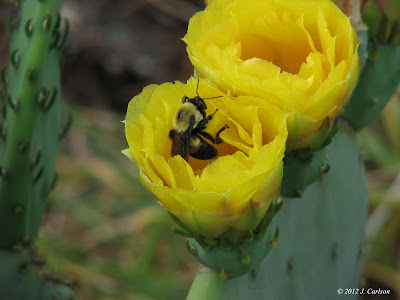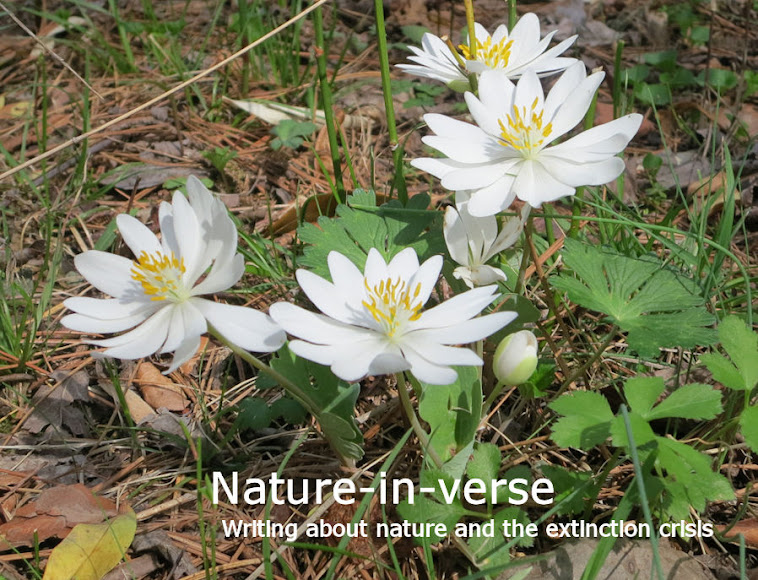The bloom of the Prickly Pear cactus is a delight for the bees as they collect pollen. They are one of the greatest pollinators of our planet. Up to thirty-percent of food crops worldwide rely on bees for pollination. They feed us along with bats, birds, beetles and butterflies, the other great pollinators.

But we are losing them. The bees to colony collapse, the bats to white-nose syndrome, beetles and butterflies to habitat loss and all to pesticides. And we are losing so much more than them at an astonishing rate.
There have been five mass extinctions in the long history of the planet. We are currently is the sixth.
Extinction is part of evolution. Scientists calculate the normal extinction rate or the background extinction rate at about one species going extinct per year per one million species. Currently we are losing species at a rate of 100 - 1000 times that every year. That's a staggering number of species being lost, perhaps over 50,000 every year!
The cause is us. We are letting the biological diversity of this planet slip away through the destruction of natural habitats, hunting, invasive species, unsustainable fishing, chemicals and pesticides.
Perhaps the words of E.O. Wilson, one of the greatest living American scientists, will jolt us into action.
"This is the only planet we're ever going to have. This planet has taken tens, hundreds of millions of years to create this beautiful natural environment we have that's taken care of us so well that is, in fact, our greatest natural heritage. And we're throwing it away in a matter of a few decades."




